The first half-century satellite of humankind
Rounded 50 years ago on October 4, 1957, world history marked a new milestone by the Soviet Union launching its first satellite into space. This event kicked off a space race between the two Soviet and American powers.
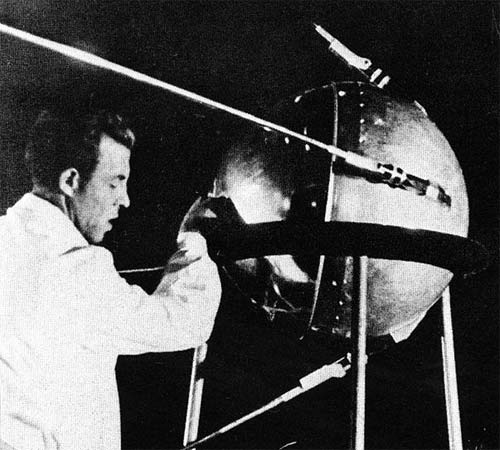
An engineer is editing the final details of the Sputnik 1 satellite in the autumn of 1957, preparing for the great event to bring it to space. The selected rocket was R-7, modified from the Soviet nuclear missile at the time.(Photo: astroprofspage)
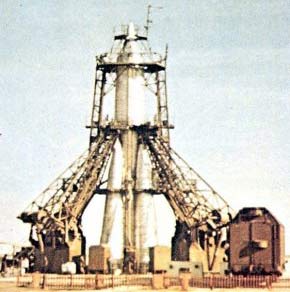
The R-7 rocket on the launch pad is ready to take the Sputnik-1 satellite into space on October 4, 1957, at the space center Baikonur, Kazakhstan.(Photo: daviddarling)
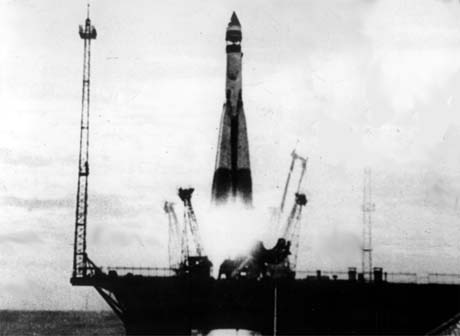
The historic moment when the R-7 rocket kicks off the ground, carrying the first human artificial satellite weighing 83.6 kg. Sputnik 1 flew around the globe in elliptical orbit for 96 minutes.(Photo: gistda.or.th).
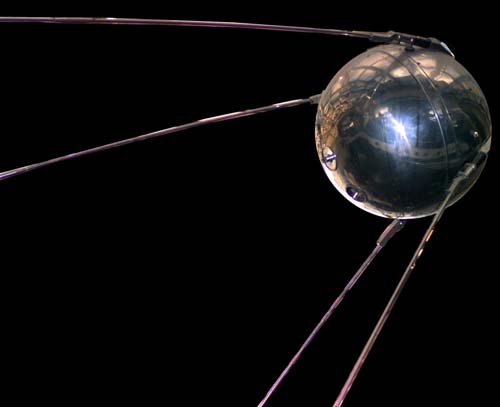
Sputnik 1 is an aluminum sphere 58 cm in diameter, inside filled with Nitrogen and flying 900 km away from the earth. The launch of this Soviet satellite has shocked Americans and immediately launched the National Aerospace Agency (NASA) to race into space with rivals.(Photo: gistda.or.th).
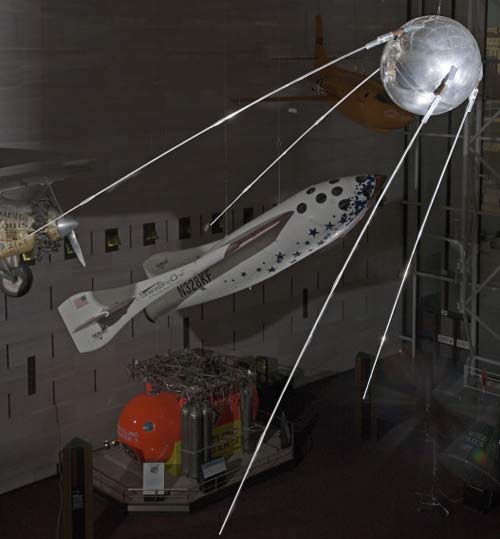
Sputnik 1 has 4 " bearded " antennae spread out around. Two satellite radio transmitters have sent "beep" sounds around the world. These simple sounds mark the beginning of the human race. Sputnik left the trajectory three months from the launch, after transmitting the first human sounds from the universe. (Photo: media.nasm.si.edu).

On the front page of the Soviet newspaper Pravda on October 6, 1957, bold news and funny pictures of Sputnik 1. (Photo: AFP)

While Sputnik 1 was still circling the earth, on November 3, 1957, the Soviet Union continued to launch a much larger Sputnik 2 satellite. This half-ton satellite carries the dog Laika and this is also the first time humans have brought a living creature to space. Sputnik 2 flew nearly 1,500 kilometers from Earth, higher than Sputnik 1. Because it was heavier, it took an hour and 42 minutes to fly all around the globe.(Photo: Thepeoplescube).

Astronaut Yuri Gagarin, the first person to fly into space, and the chief engineer designed Sputnik Sergei Korolyov satellite (right) taken on September 15, 1961. Korolyov's work and achievements were considered top-secret in the Soviet Union and were revealed only after his death in 1966. During the course of his career, unrelated people only knew the father of Sputnik satellite. This is the name of " General Engineer ". (Photo: Ria Novosti).

A version of Sputnik satellite, suspended above Russian spacecraft models, in an exhibition at the Moscow Museum of Technology.(Photo: AFP).

The monument to the architect of Soviet space research program Sergei Korolyov, who designed the Sputnik satellite, is located in the city of Baikonur, Kazakhstan. This is the space center of the Soviet Union and is now being used by Russia.(Photos: Wikipedia)
Government
- America's oldest 'satellite' falls to Earth
- The journey to discover Mars of humankind
- New discovery about the cradle of human mathematics
- 50 leading electronics in the past half century
- Discover the earliest ancestors of humankind
- Compare 16th century maps and satellite maps today
- Brazil: The most severe drought in the past half century
- For the first time, an embryo has been successfully created, half a half pig
- The 7,000-year-old Spanish tombstone was first 'exposed' after half a century
- Predicting the future 50 years later
- Angkor, the home of gods
- 'Half a tree, half a child' under the sea
 The 11 most unique public toilets in the world
The 11 most unique public toilets in the world Explore the ghost town in Namibia
Explore the ghost town in Namibia Rare historical moments are 'colored', giving us a clearer view of the past
Rare historical moments are 'colored', giving us a clearer view of the past The world famous ghost ship
The world famous ghost ship